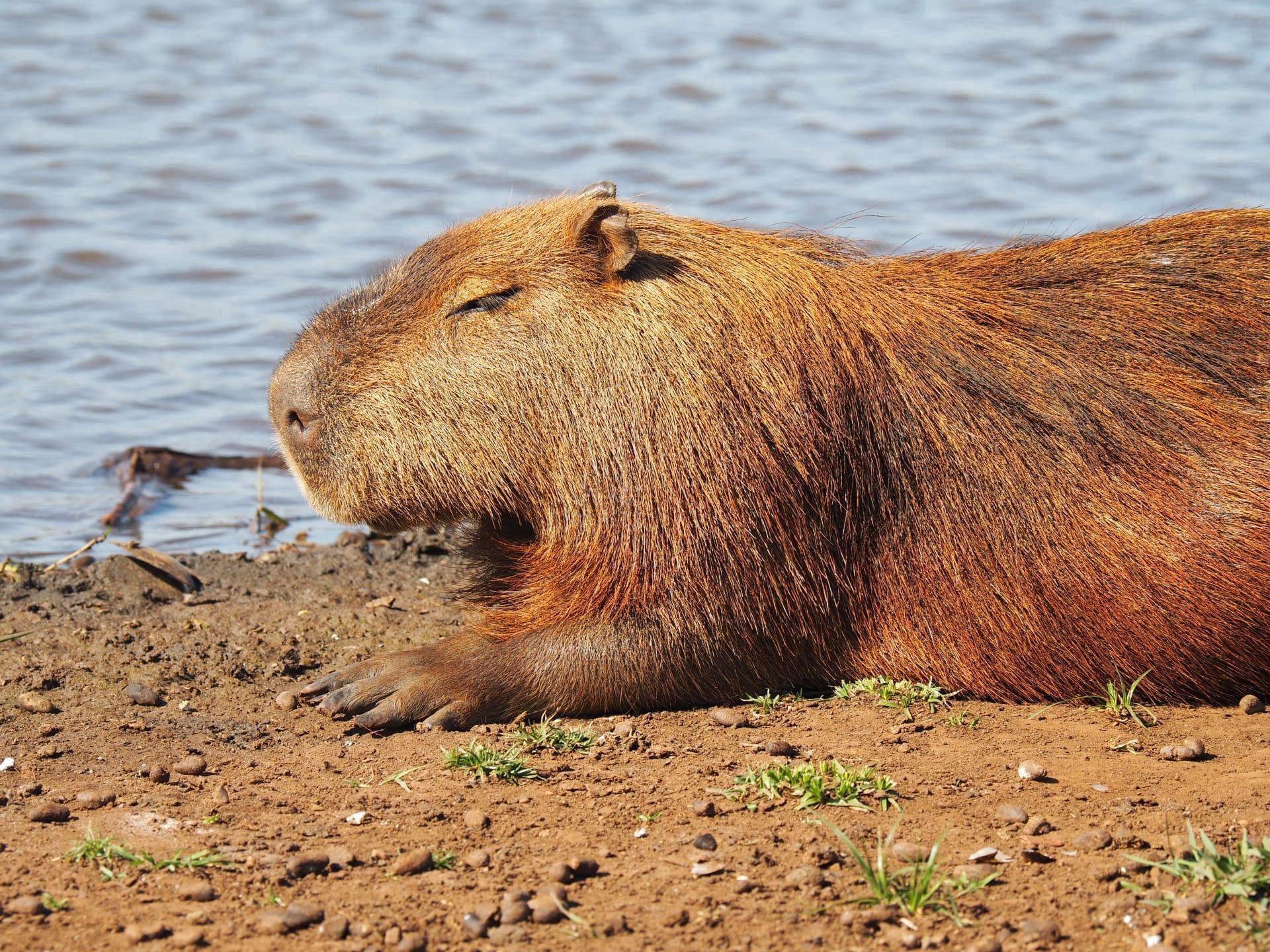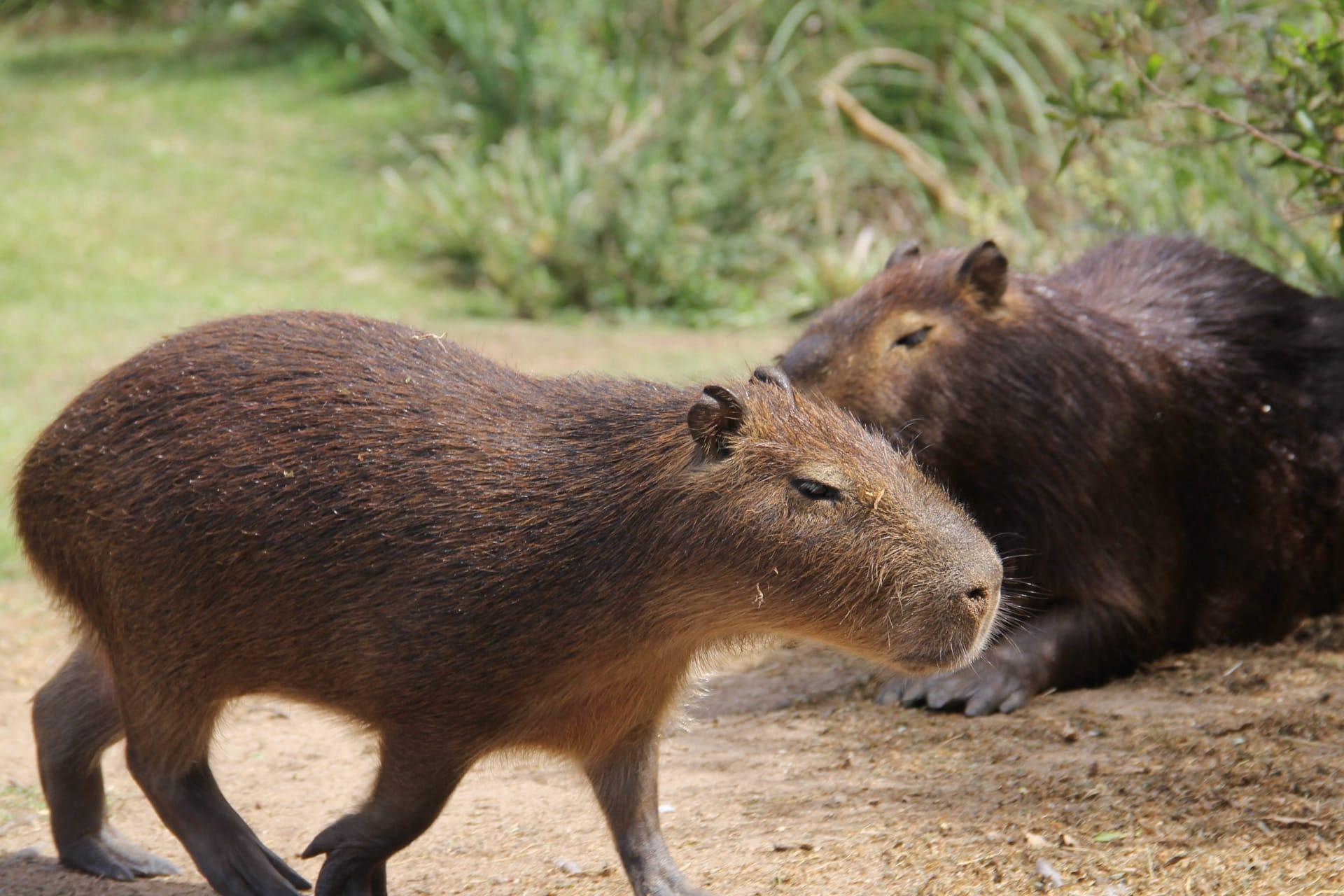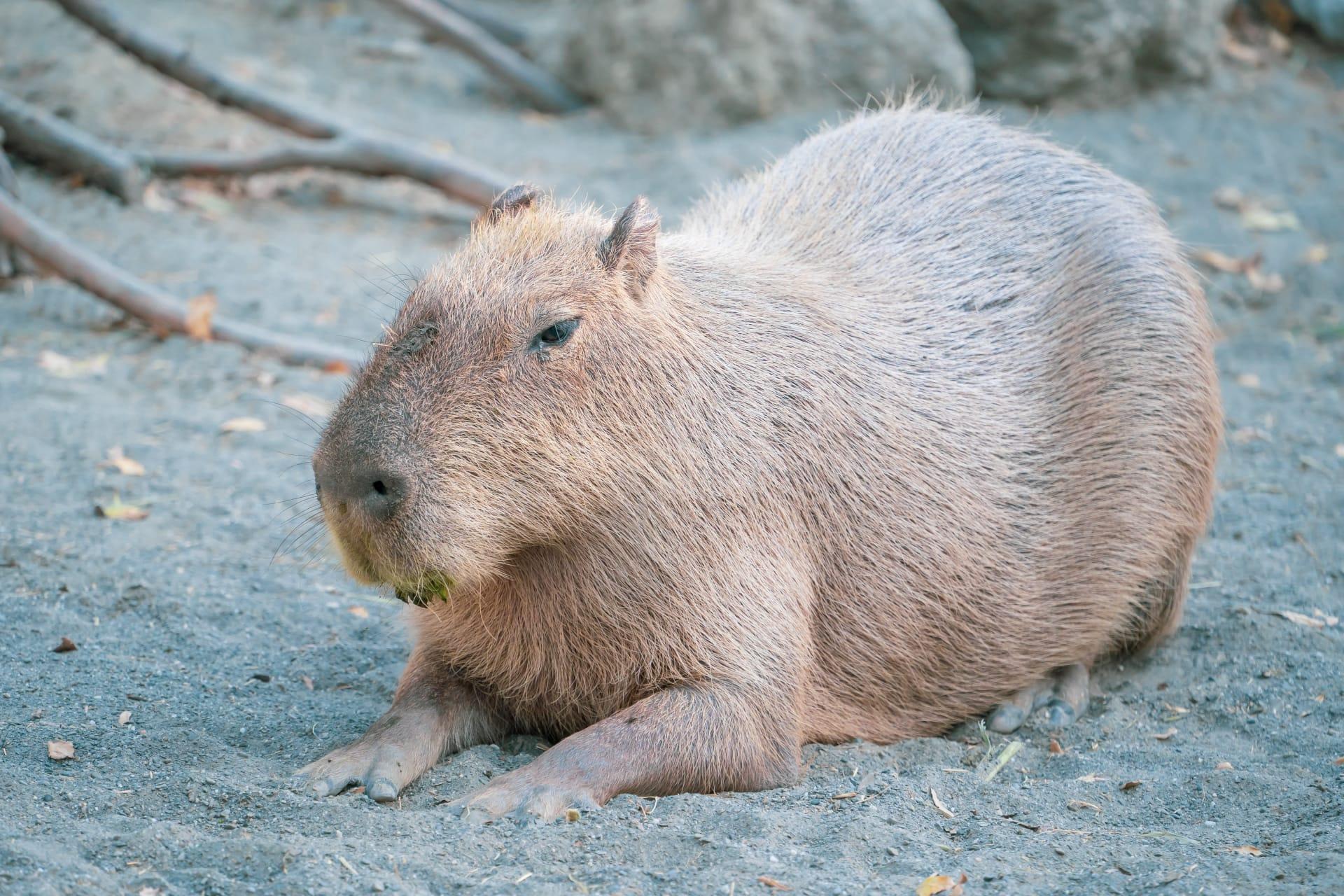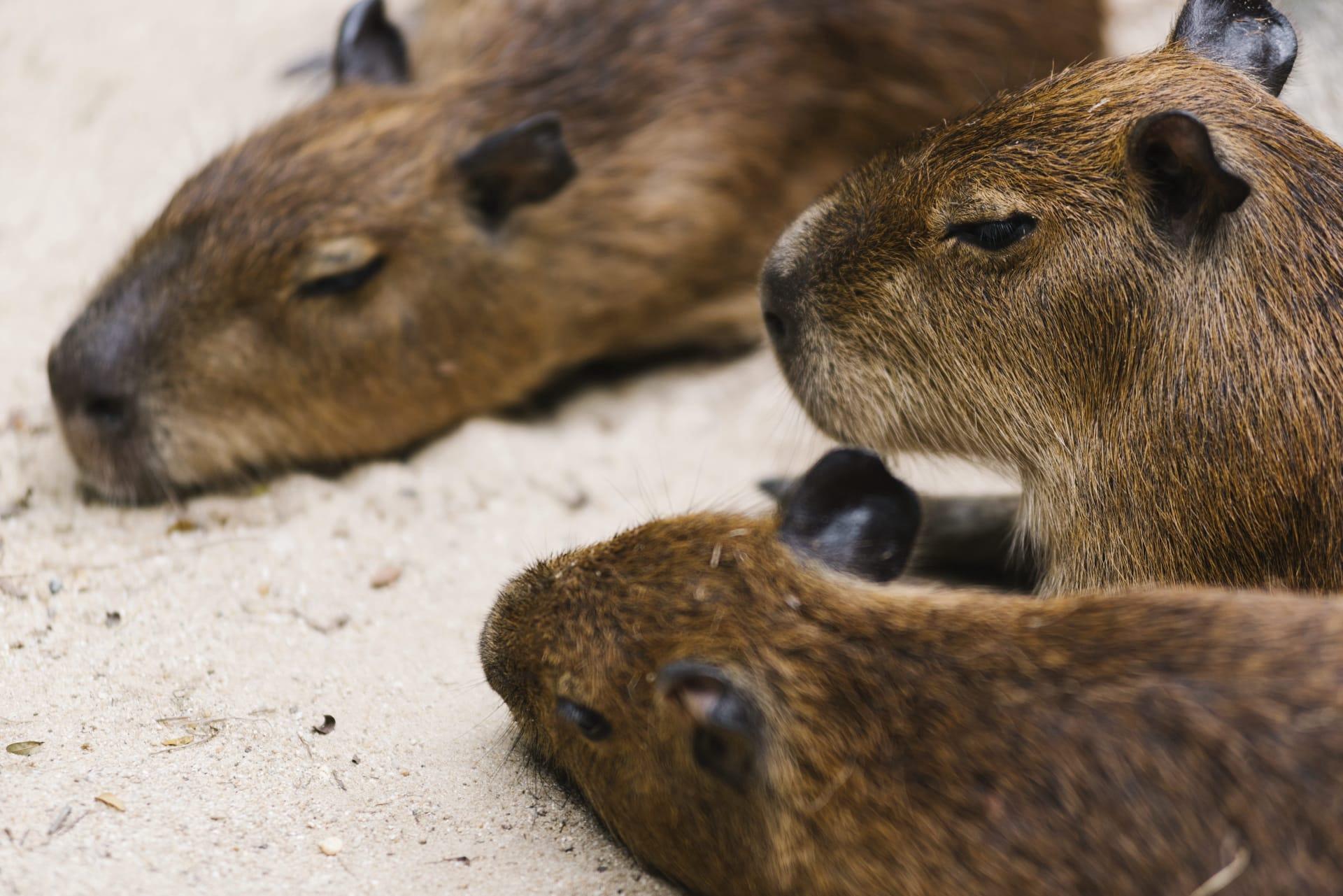Capybara Characteristics
- Home /
- Mini Encyclopedia /
- Animal /
- Capybara Characteristics
1
The capybara, the largest rodent in the world, is a fascinating creature that boasts a hefty size. Adults can weigh between 35 to 66 kilograms (77 to 146 pounds) and measure up to 134 centimeters (4.4 feet) in length. Despite their bulk, these rodents have a charmingly squat appearance, with a height of about 50 to 62 centimeters (20 to 24 inches) at the shoulder. In the wild, capybaras have a lifespan of around 8 to 10 years, but under human care, they can live up to 12 years. Their robust bodies are covered in coarse, brown fur, and they possess webbed feet, a trait that hints at their semi-aquatic lifestyle.
The most remarkable organ of the capybara is its unique digestive system, particularly its large cecum. Capybaras are herbivores, primarily feeding on grasses and aquatic plants. Their cecum, a pouch connected to the junction of the small and large intestines, plays a crucial role in digesting these fibrous foods. It's home to a rich community of bacteria that breaks down the cellulose in plants, a task the capybaras' own enzymes can't handle. This fermentation process allows them to extract maximum nutrients from their diet, crucial for their survival in the diverse ecosystems they inhabit.

2
Question: What do capybaras eat and how does their diet impact their lifestyle?
Answer: Capybaras are herbivores, predominantly feeding on a variety of grasses and aquatic plants. This diet necessitates living near bodies of water, as their food sources are often found in or around wetlands and riverbanks. Their feeding habits have a significant impact on their lifestyle, leading them to adopt a semi-aquatic existence. They spend a considerable amount of time in the water, not only for food but also as a refuge from predators. The capybara's diet is also linked to its social behavior; they often feed in groups, which helps in spotting predators and also plays a role in the social bonding within their communities.

3
Capybaras are exceptional swimmers, a trait that aligns with their semi-aquatic lifestyle. Their webbed feet aid in efficient swimming, allowing them to traverse through water with ease. On land, they can run surprisingly fast, reaching speeds up to 35 kilometers per hour (22 miles per hour) when escaping from predators. This agility is vital for their survival in the wild, where they are often targeted by jaguars, anacondas, and caimans.
In terms of feeding, capybaras are grazers. They consume up to 3 kilograms (about 6.6 pounds) of grass daily, often feeding during dawn and dusk to avoid the midday heat. They have a unique adaptation for their grazing lifestyle: their jaws can move side to side, which is effective for grinding the fibrous plants they consume. Additionally, capybaras practice coprophagy, where they consume their own feces to further digest the cellulose and extract more nutrients from their food, a crucial adaptation for their high-fiber diet.

4
Capybaras inhabit various environments across South America, thriving primarily in densely forested areas near bodies of water, such as rivers, ponds, and marshes. These environments provide them with ample vegetation for food and water for swimming, a key aspect of their survival strategy. The proximity to water is essential not only for their diet but also for protection against predators.
Reproduction plays a significant role in the capybara's life cycle. They are social animals, usually living in groups of 10 to 20 individuals, though some groups can number over 100. The breeding season is influenced by the habitat, but it typically occurs during the rainy season when resources are abundant. Females give birth to a litter of 2 to 8 pups after a gestation period of about 150 days. The young capybaras are precocial, able to stand and even swim shortly after birth. This early development is vital for their survival in the wild.

5
Book: "The Secret Life of Capybaras" by Thomas Greene, published in the United States in 2010. This book offers an in-depth look into the world of capybaras, exploring their behavior, social structure, and the unique adaptations that allow them to thrive in their habitats. Greene's narrative combines scientific research with engaging storytelling, providing readers with a comprehensive understanding of these fascinating creatures.
Book: "Capybaras: Giants of the Rodent World" by Emily Santos, published in the United Kingdom in 2015. Santos delves into the ecological significance of capybaras, examining their role in the ecosystem and the challenges they face due to environmental changes and human activities. The book is a blend of scientific information, conservation efforts, and insights into the daily life of capybaras, making it an informative and compelling read for wildlife enthusiasts.